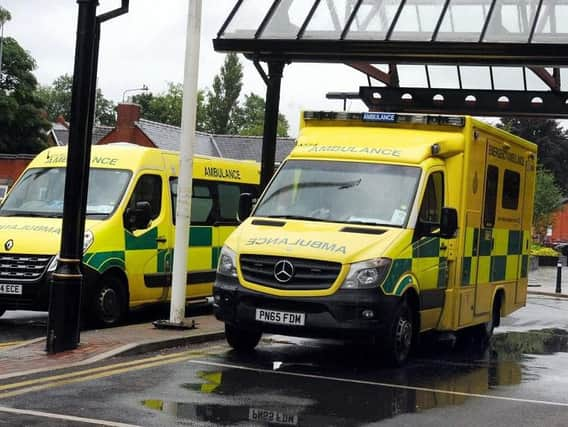Ambulance response times revealed


North West Ambulance Service now aims to respond to life-threatening and emergency calls in seven minutes.
But the mean response time was 10 minutes seven seconds in August, the first time this standard was used.
Advertisement
Hide AdAdvertisement
Hide AdFor “emergency” calls, dubbed category two, the target is 18 minutes, but the mean time across the North West was 24 minutes 20 seconds.
Although the new data cannot be compared to the previous way of reporting, it continues the trend of the ambulance service failing to meet response time targets.
Once ambulances arrived at Wigan Infirmary, more patients had to wait to be handed over to hospital staff.
It took more than 30 minutes in 23.78 per cent of cases in August, rising from 19.38 per cent the previous month.
Advertisement
Hide AdAdvertisement
Hide AdFigures for September show the A&E unit again missed its targets for seeing patients within four hours.
This was met in 85.75 per cent of cases, below the 91.5 per cent target agreed with NHS Improvement and the 95 per cent national standard.
However, it was an improvement from the 82.89 per cent performance in August.
Earlier this month there was a shake-up of the A&E department, which now sees patients who do not have an injury and can walk and talk instead being treated at a primary care streaming centre at the nearby Christopher Home.
Advertisement
Hide AdAdvertisement
Hide AdMary Fleming, director of operations at Wrightington, Wigan And Leigh NHS Foundation Trust, said: “Although attendances to A&E remains fairly static, WWL has seen a six per cent increase in attendances to A&E resulting in admissions.
"The trust continues to implement a number of key national priorities while addressing local issues such as demand, workforce and bed capacity. I would like to thank all our hardworking frontline staff and the teams who support them in the incredible job they do providing safe patient care under such difficult circumstances.”